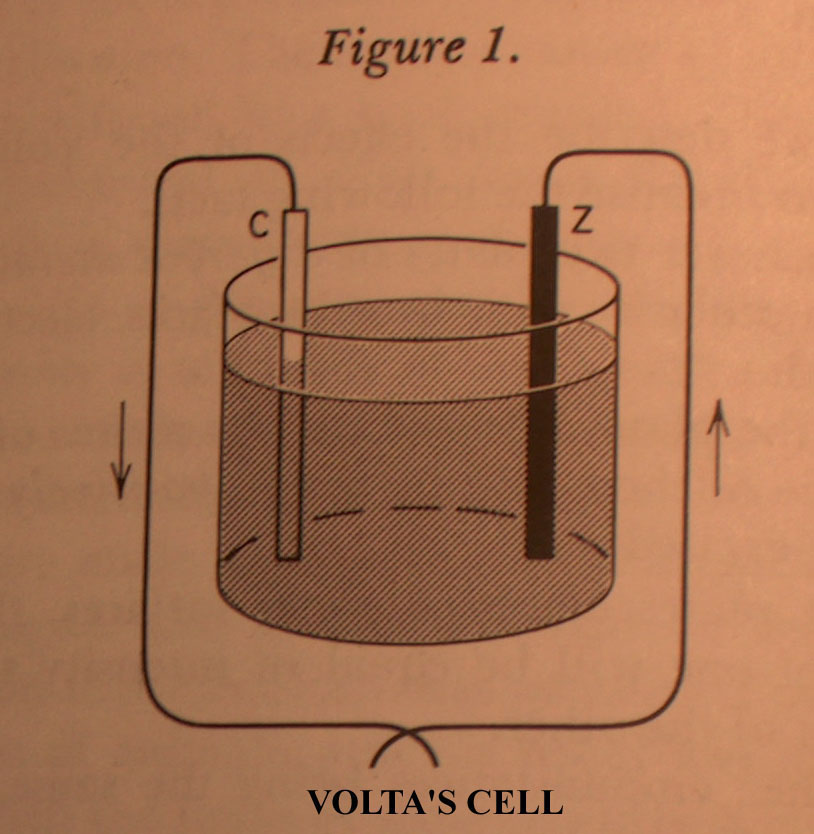THE EXPERIMENT--VOLTA'S CELL

Above is a diagram of a reconceptualization of one of Volta's early experiments (4). This diagram and the experiment it describes is taken from "Galvanism," by Almira Phelps, from her book "Lectures on Chemistry" published in 1837. This experiment is like one that Volta did around 1800 in order to test his hypothesis that two different kinds of metal could produce electricity, thus explaining what caused the legs of dead frogs to twitch on Galvani's lab table (see our historical background). Let's imagine that in this experiment Volta used a voltmeter connected to the wires to detect an electrical current--in his day a device for measuring an electrical current would probably have been called an "electrometer." What the diagram shows is a flask containing a diluted acid solution, with two metal strips suspended in the solution, one made of copper, marked "c," and the other of zinc, marked "z." The solution is referred to as an "electrolyte," a term that probably came into existence some time after Volta did his experiment. Let's imagine that the strip of zinc is connected by the wire to the negative pole of the voltmeter, and the strip of copper, is connected to the positive pole of the voltmeter. If the needle on the voltmeter moves to the right from its zero mark on the left, then the experiment supports Volta's hypothesis that two different kinds of metal can be made to produce an electrical current. In fact, this is indeed what happens when this experiment is carried out.
It is interesting to note that this experiment by Volta was significant in advancing our knowledge of chemistry. When this experiment is done today we are far more interested in the details of the underlying chemical reactions involved, details Volta was largely unaware of. Before going on to look at a modern day lab report for the Volta cell experiment, let's consider some of the basic guidlines for writing a lab report.